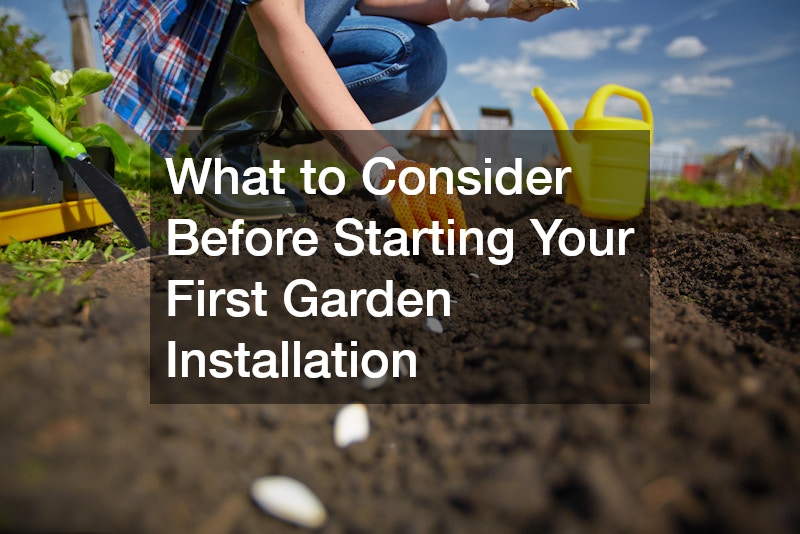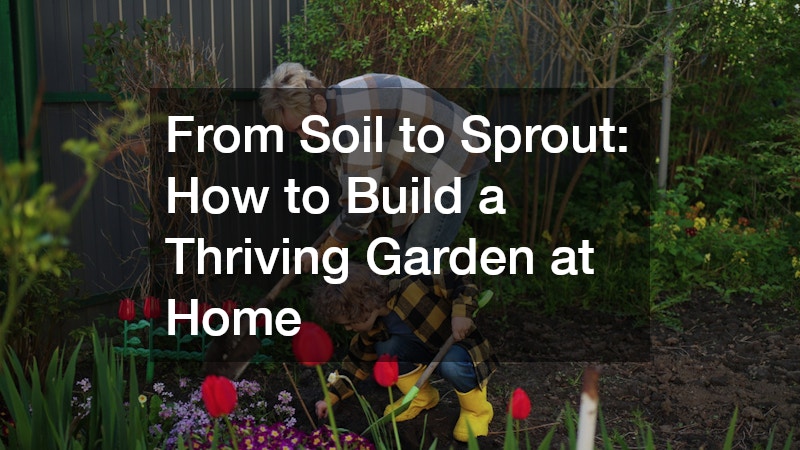Starting your first garden installation is an exciting venture for any homeowner. Creating a yard that feels inviting, functional, and visually appealing takes careful planning and strategic choices. Without proper preparation, even small projects can become frustrating or expensive. Understanding the space, climate, and soil conditions is essential before you plant your first flower or lay the first stone.
By assessing your outdoor space, preparing soil properly, and seeking professional input, homeowners set themselves up for a garden installation that is both beautiful and sustainable. Thoughtful preparation ensures that every plant, path, and feature works together to create an outdoor space that’s functional, inviting, and enjoyable for years to come.
1. Assessing Your Outdoor Space
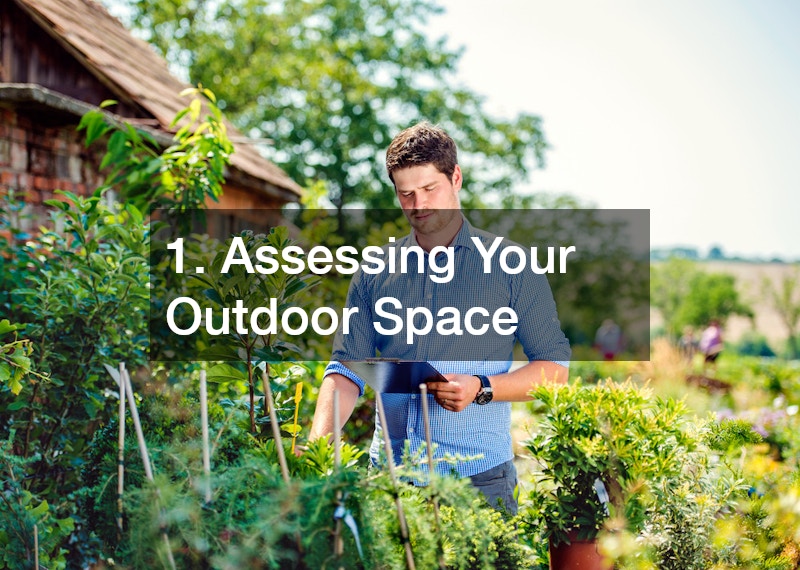
Understanding your yard is the first step in planning a successful garden installation. Observe areas that receive direct sunlight, shade, or partial light throughout the day. Sunlight impacts which plants will thrive, while shaded areas are better suited for ferns, hostas, or shrubs that tolerate lower light. Assessing soil composition and drainage patterns is equally important, as waterlogged areas can harm roots and stunt growth.
Homeowners often start by improving soil conditions with top soil deliveries. Rich soil ensures plantings establish quickly and supports the long-term health of lawns and flower beds. Conducting a soil test can also help determine nutrient needs, allowing you to amend the soil appropriately before installation begins.
Planning for functional zones in your yard improves usability. Areas for entertaining, relaxation, or play should be identified early, ensuring they integrate well with gardens and pathways. Consulting a landscape designer provides additional benefits, such as professional insight into plant spacing, color schemes, and layout. Designers can suggest ways to incorporate hardscape elements without disrupting natural flow, saving both time and money.
Taking a careful, analytical approach to your yard ensures the garden installation will be both practical and visually harmonious. By understanding sunlight, drainage, and space utilization, homeowners create a strong foundation that supports long-term growth and beauty, making the investment in planning as rewarding as the final result.
2. Planning Hardscaping Features
Hardscape elements define a garden’s structure and functionality. Patios, walkways, retaining walls, and decorative edging improve accessibility, manage soil erosion, and enhance visual appeal. Selecting the right materials ensures durability while complementing surrounding plants and lawns.
Retaining wall pavers prevent soil erosion on sloped properties while creating terraces or raised beds that enhance planting opportunities. Walkway pavers are particularly useful for directing foot traffic, reducing wear on grass and preventing soil compaction. Strategically placed pathways also connect different zones, linking patios, seating areas, and garden beds.
Hardscaping adds dimension to a landscape by separating functional areas and creating visual interest. It can guide traffic, protect delicate plants, and highlight key features like flower beds or trees. Pathways made with stone, brick, or composite materials combine practicality with beauty, forming a cohesive design across the garden.
Incorporating concrete patio and extensions adds functional living space. Patios provide durable platforms for outdoor dining or lounging while integrating seamlessly with gardens and lawns. Proper installation ensures longevity and prevents drainage issues, supporting both beauty and usability.
Thoughtful hardscape planning elevates your garden from simple planting to a fully functional outdoor living area. By combining functionality with aesthetic appeal, homeowners create spaces that are accessible, organized, and visually balanced.
3. Preparing for Sod Installation
A lush, green lawn often serves as the centerpiece of a garden installation, offering both visual appeal and functional space for recreation or relaxation. Whether you choose traditional seed, hydroseed, or sod, preparation is critical to achieving long-lasting results. Begin by clearing debris, removing weeds, and leveling uneven ground to create an ideal growing environment. Amending the soil with nutrient-rich materials ensures that grass roots establish quickly and grow evenly. Top soil deliveries are particularly useful when improving poor-quality soil or filling low spots, providing a consistent foundation across the lawn.
When installing sod, timing, water management, and layout are key factors. Sod should be laid promptly after delivery to prevent drying out, and careful watering schedules help the grass adapt to its new environment. Professionals can coordinate sod delivery and installation to minimize stress on the grass, reducing the risk of patchiness, disease, or other setbacks. Proper irrigation, drainage planning, and sunlight considerations also play a significant role in creating a thriving lawn.
Sod installation offers immediate results compared to seeding, making it especially appealing to homeowners seeking quick transformation. Once installed, routine care—including watering, mowing, and occasional fertilization—ensures your lawn remains vibrant and healthy. Proper preparation and professional guidance during sod installation enhance both the look and longevity of your garden, creating a green foundation that supports other landscape features, from flower beds to patios and walkways.
4. Planning to Clear Space
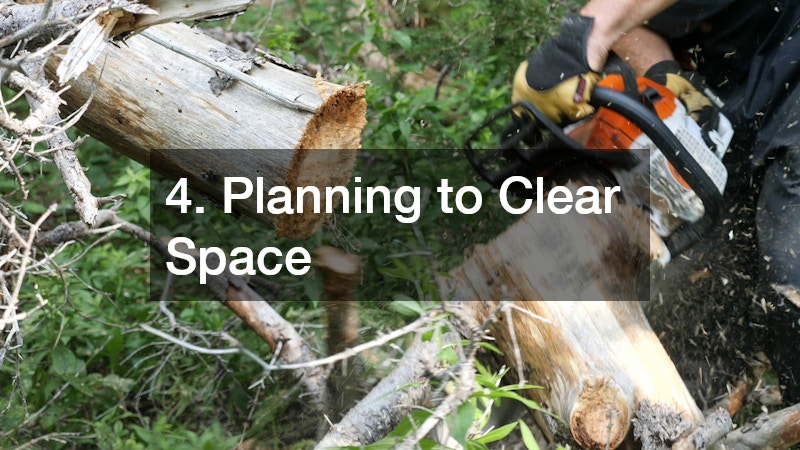
While planting trees enhances shade, privacy, and aesthetics, sometimes removal is necessary before beginning a garden installation. Diseased, overcrowded, or poorly positioned trees can block sunlight, damage structures, or create safety hazards. Hiring professional crews for tree removal ensures the process is conducted safely, efficiently, and without harming other parts of your landscape.
Professionals assess the health, size, and location of trees before planning removal. They can also provide guidance on stump grinding, soil restoration, and suitable replacement plantings. Removing a tree may open up areas for sunlight-loving plants, sod, patios, or seating zones, allowing your garden to flourish as intended. Properly timed removal ensures that new features are integrated seamlessly without the risk of future interference from overgrown roots or branches.
Integrating tree removal into the broader garden installation plan also helps with layout, grading, and hardscaping. Planning for removal prevents potential damage to pathways, retaining walls, fences, and patios. By taking this step seriously, homeowners ensure a balanced, harmonious outdoor space where plantings, hardscaping, and lawn areas can coexist without compromise. Thoughtful preparation for tree removal supports both aesthetic goals and long-term maintenance success.
5. Incorporating Fencing and Boundaries
Fences play a vital role in garden design by providing privacy, security, and visual structure. Thoughtfully installed boundaries not only protect your yard but also enhance overall curb appeal. Professional fence installers can help you choose the right materials, height, and style to match your home and garden, ensuring long-lasting durability and visual harmony.
Material selection is key: wood fences provide warmth and a traditional look but require regular maintenance, while vinyl or composite options offer low-maintenance durability. Proper placement ensures that fences support climbing plants, flowers, or decorative elements without obstructing pathways or patios. Fencing can also help define zones, such as separating play areas from garden beds or creating a private retreat near a patio or seating area.
Early planning ensures that fences integrate seamlessly with other garden features. A well-placed fence complements hardscaping elements like walkways, retaining walls, and patios while contributing to a cohesive outdoor aesthetic. By thinking through both function and design, homeowners can transform fencing from a simple boundary into a key feature that enhances privacy, security, and the overall flow of the garden installation.
6. Working With a Landscape Designer
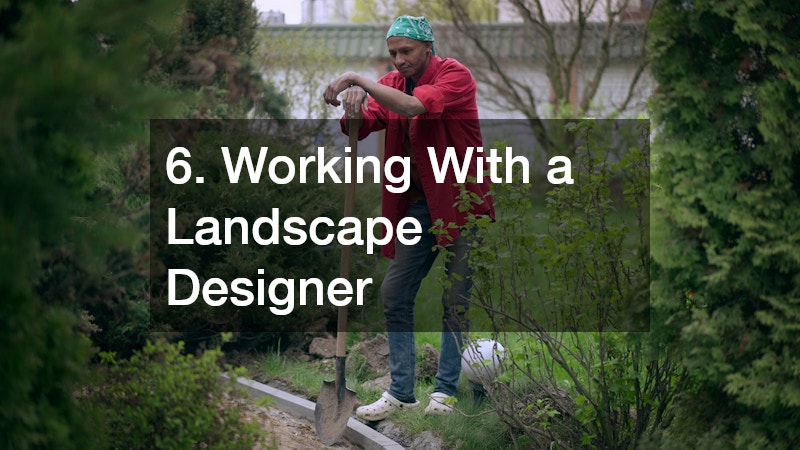
Many first-time gardeners benefit from collaborating with a professional landscape designer. These experts can translate your vision into a detailed plan that balances aesthetics, functionality, and long-term growth. A designer considers plant selection, hardscaping materials, lighting, irrigation, and seasonal changes to create a harmonious outdoor environment.
Working with a designer also helps prioritize projects based on budget, timeline, and local climate. They can advise on durable choices for walkway pavers, retaining wall pavers, concrete patios, and more, ensuring each element works together visually and functionally. Even small adjustments in layout can improve accessibility, sun exposure, and drainage.
Professional guidance can also help first-time homeowners avoid common pitfalls, such as overcrowding plants, improper grading, or mismatched materials. The result is a cohesive garden installation that feels intentional, inviting, and easy to maintain for years to come.
7. Hardscape Elements and Outdoor Living
Hardscape elements give structure and functionality to any garden installation. Incorporating pathways, patios, and retaining features creates distinct zones and makes outdoor spaces more accessible. Properly designed hardscape also protects soil and plantings from erosion while defining usable areas for entertaining, relaxation, or play. Hardscaping can transform uneven or sloped areas into practical terraces. Retaining walls support raised beds and prevent soil movement, while strategically placed hardscape creates smooth transitions between different sections of the yard. These features also enhance visual interest by contrasting textures, colors, and materials against plantings.
Concrete patio and extensions provide durable surfaces for outdoor living. They accommodate furniture, barbecues, or family gatherings while remaining low-maintenance and long-lasting. Well-installed patios ensure proper drainage and prevent water pooling that could damage nearby plants or structures. Walkway pavers serve both functional and aesthetic purposes. They guide movement throughout the garden, preventing wear on lawns and directing visitors to key areas. Materials like stone, brick, or composite allow homeowners to match the overall design style, from modern to rustic, while maintaining safety and accessibility.
Retaining wall pavers add elevation and interest to sloped landscapes. They create defined planting areas and can double as informal seating in entertaining zones. By thoughtfully planning hardscape features, homeowners can design an outdoor space that balances beauty with usability. Professional installation ensures durability, precise placement, and proper grading. Thoughtful integration of hardscape elements with plantings and lawns results in a harmonious garden that is visually appealing, functional, and enjoyable year-round.
8. Storage and Custom Structures
Gardens often benefit from functional structures, such as sheds, pergolas, or storage units. A custom shed builder can design units that complement your garden’s aesthetic while providing practical storage for tools, lawn equipment, or seasonal items.
Custom sheds allow for flexibility in materials, finishes, and layout, ensuring the structure blends seamlessly with existing landscaping and outdoor design. They can also include electricity, workbenches, or storage solutions tailored to your needs. Positioning these structures thoughtfully is critical, as it affects pathways, sun exposure, and visual balance.
When paired with landscaping elements like walkways, patios, or fencing, custom sheds contribute to both the functionality and style of a first-time garden installation. Well-planned outdoor structures extend your living space and support a more organized, enjoyable backyard environment.
9. Integrating the Elements
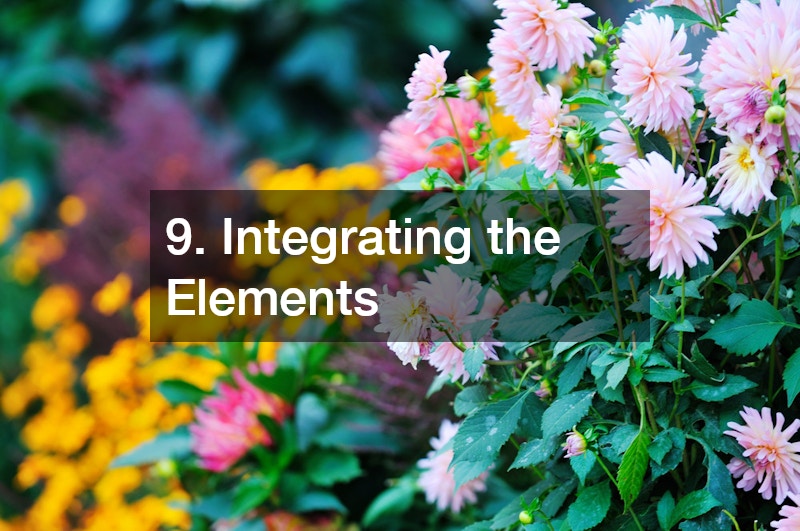
After addressing hardscaping and structures, it’s time to add greenery. Strategic placement of trees, shrubs, and flowering plants enhances visual appeal and provides shade, privacy, and seasonal interest. Coordination with sod installation ensures that your lawn establishes properly alongside plantings.
Using high-quality topsoil beneath plants and sod improves water retention and root growth, while professional guidance can help select species suited to your climate, soil type, and sunlight. Combining plants with hardscaping features, like walkways or patios, creates balance and flow.
Consider layering vegetation for depth, mixing evergreen and deciduous plants, and planting shade trees near patios or seating areas. With thoughtful planning, first-time garden installations evolve into lush, functional, and inviting spaces that enhance both daily life and property value.
10. Final Touches and Maintenance
The last stage of a garden installation focuses on finishing details and maintenance. Proper care ensures that your investment grows into a thriving, long-lasting outdoor environment. Regular watering, pruning, fertilizing, and monitoring for pests are key to sustaining plant health.
Retaining walls, walkways, patios, fences, and sod require periodic inspection and maintenance to prevent damage from weather, erosion, or use. Integrating your hardscaping and plantings with durable materials and professional installations reduces long-term upkeep.
Planning for seasonal changes, such as mulching in the fall or irrigation adjustments in the summer, ensures that your garden remains vibrant year-round. With consistent care and attention, first-time garden installations transform ordinary yards into extraordinary spaces that reflect your style, support outdoor living, and provide ongoing enjoyment.
By balancing soft landscaping with structural elements, homeowners can create outdoor spaces that are both inviting and highly functional. Professional guidance can simplify the process, helping to align aesthetic vision with practical considerations. Collaborating with skilled contractors ensures each element is executed safely, efficiently, and with long-term durability in mind. Planning ahead also allows homeowners to prioritize tasks, manage budgets, and avoid disruptions that could affect the flow or functionality of the space. Ultimately, a well-planned first garden installation can transform an ordinary yard into a sanctuary that enhances everyday living. Beyond aesthetics, these improvements can boost property value and provide lasting enjoyment, making the effort and investment truly worthwhile.
